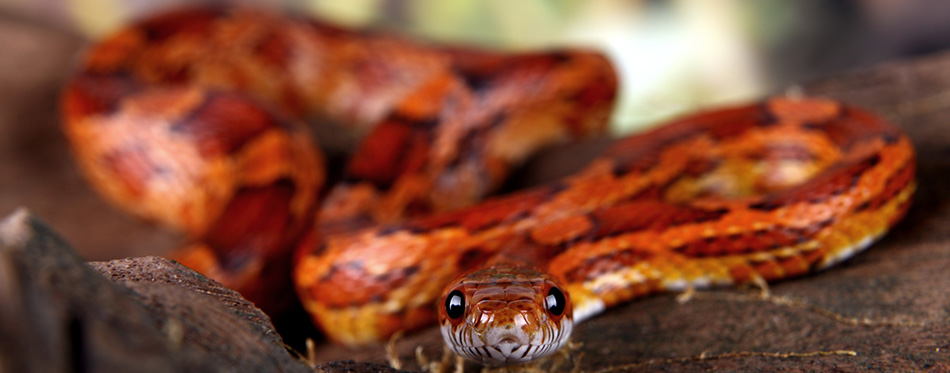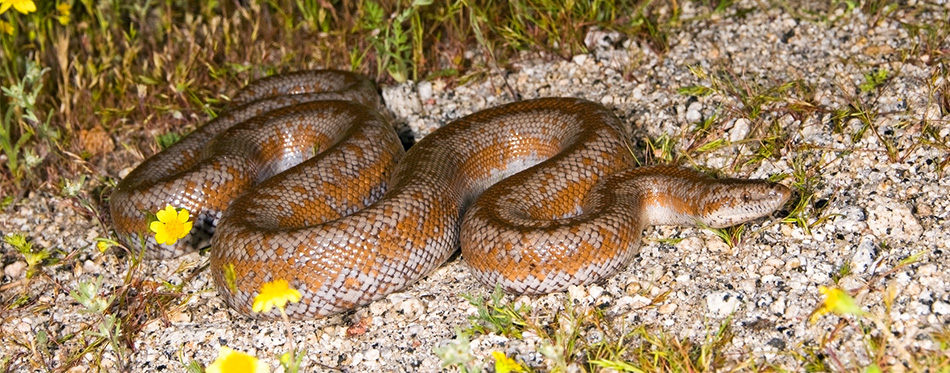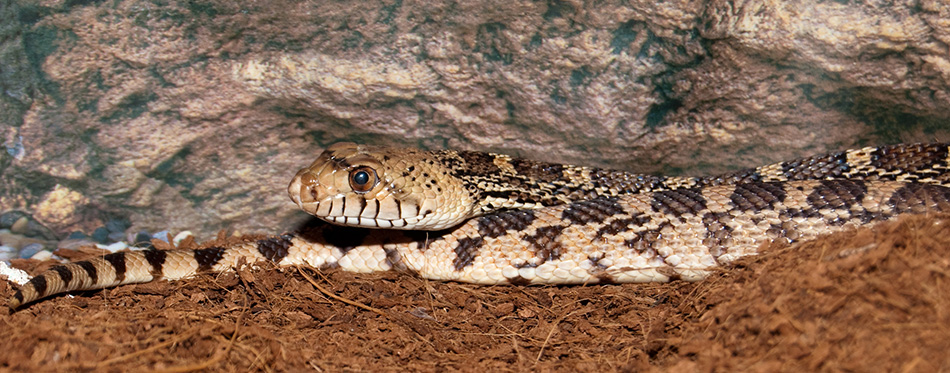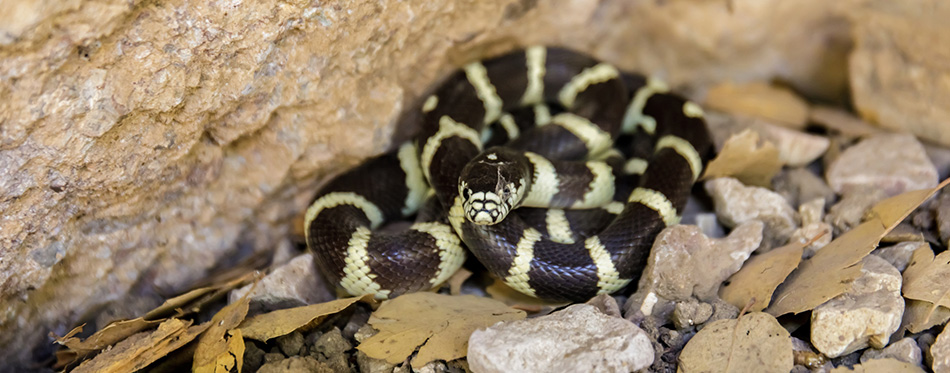Snakes are beautiful, albeit often-misunderstood creatures. That is why there are now a lot of people who are taking them as pets. Like other pets such as dogs and cats, having a snake for a pet requires some special understanding of their unique characteristics, behaviors, nutrition, and health needs. On the plus side, pet snakes will never beg for attention and display destructive behavior whenever they don’t get the interaction they need. On the negative side of things, you don’t get to cuddle with them. Many can be venomous and dangerous to humans and other animals, too. If you’re interested in bringing home a pet snake, it is important to always choose one that’s ideal for beginners. Here are 5 of the world’s best pet snakes for absolute beginners.
Corn Snake

The Corn Snake was one of the world’s most popular and most sought-after pet snake; that is until the Ball Python came along. This is not to say that the Corn Snake has already lost its appeal. It still makes for a great pet, especially for individuals who love the serpent’s amazing color combinations.
Like all pet snakes for newbies, the Corn Snake is very docile and quite easy to care for. While most snakes don’t like getting petted or handled by their respective owners, the Corn has a wonderful tolerance. Its calm temperament is quite extraordinary, since this serpent is best known for hunting small rats.
Regardless of its docile nature, it is still best to leave the serpent alone in its house for the first few weeks upon getting home. An occasional interaction every now and then with minimal handling can help the passive animal acclimatize to its new surroundings. Don’t rush into petting the animal as it can also get defensive. However, you’d get more injuries from a cat than this serpentine baby.
Some Corn snakes are small, reaching only a length of 2 feet. There are those that can grow up to 5.5 feet, nonetheless. Newly-hatched snakes can be anywhere between 8 and 12 inches long. As such, housing should never be an issue with the young ones. Adult serpents, on the other hand, may require a larger enclosure than what juveniles need. An empty 20-gallon fish tank is often enough to house the adult.
Do keep in mind that the more space that the snake has, the happier it will be. There is another thing you have to keep in mind. Corn snakes don’t like living together with fellow Corns or other snakes. They aren’t that sociable. Putting two snakes in one tank can be very stressful for these animals. As for their heating and lighting needs, natural light often does the trick. Don’t put it under direct sunlight, though, as it can be fatal. Keep the enclosure escape-proof, too. They may be docile, but they’re very prolific escape artists.
As for their nutrition, snakes are carnivorous. They subsist on a diet of whole rats. Lizards and frogs can be occasional treats. Hatchlings can thrive on newborn mice. Adult Corn snakes can also eat bird and their eggs. Feed adults once every 5 to 7 days, although some individuals feed them once every 7 to 10 days.
Ball Python

Known for their shy demeanor and numerous morphs, the Ball Python has overtaken the Corn Snake as the most popular pet serpent on the planet. Unfortunately, while the Corn Snake is a lot easier to care for, the Ball Python requires special measures. This is because the serpent is a native of West and Central Africa. Having said that, it is critical to control the temperature and humidity in its enclosure.
Ball Pythons need an environmental temperature that should never drop below 75 degrees Fahrenheit. They also grow and thrive best in humidity levels of between 50% and 60%. Not only does this ensure better health for the pet serpent, it also helps in proper shedding. It is often a good idea to get a thermometer and a hygrometer and place these in the enclosure. This way, you’ll be able to monitor the snake’s environment and allow you to make the necessary adjustments.
Unlike Corn snakes that will never mind going out in the open, Ball Pythons prefer to hide. This poses a significant implication in how you should handle it. In the first few weeks in your home, it is best to leave them alone. By the time they get accustomed to their “new world”, you can start interacting with them. Be sure to do so in a calm and relaxed manner. If you’re anxious or nervous, it’s best not to handle them. Also, avoid making any sudden movements as this can be very stressful for the serpent.
The Ball Python may be shorter than the Corn Snake, but it sure is fat. A full-grown female Ball Python can grow anywhere between 3 and 5 feet while males are shorter at 2 to 3 feet. Despite their short length, they are quite fat on the account that they’re constrictors. Hence, adults will need a larger enclosure with the minimum being 30 gallons. The recommendation is to put a large bowl of water inside the enclosure so the python can soak itself. It is also critical to provide a hideout or a hide box. Remember, this snake loves to hide. Don’t forget the bedding or layering as snakes also love to burrow. Find out more about snake bedding here.
Ball Pythons eat only once a week. They love feasting on an appropriately-sized rodent. Another word of caution. After feeding the python, don’t handle it for about a day or two to avoid regurgitation. Take note, too, that these serpents may not feed for some time at certain points of the year.
Rosy Boa

It may not enjoy the popularity of the Corn Snake or the wonderful morphs of the Ball Python but the Rosy Boa remains one of the best pet snakes for beginners. For starters, it can reach an adult length of only 34 inches or less than 3 feet. However, there are California coastal specimens that can reach up to 44 inches. They call it “rosy” because of the salmon-like color on the belly of coastal specimens. Most, however, have light-colored skin with dark to orange spots.
There are many perks to having a “small” snake in the home. First, you don’t need a large enclosure. Having a 10- or 20-gallon tank is enough, although the bigger the enclosure the better it is for the pet. Escape-proofing the tank is important. Layering it with the right bedding is also critical. This is because this species of serpent loves to burrow. Most will use torn pieces of old newspaper or paper towels. Some use aspen bedding. Whatever material you want to put in the enclosure, it’s best to make it about 2 inches deep. This will help in the burrowing behavior of the boa.
Like the Ball Python, the Rosy Boa is also a shy animal. It burrows because it doesn’t like the intrusion. You might want to get a larger enclosure so you can put a mini hideout for the animal. They love hiding in rock crevices and other similar geological features.
Another important consideration is the snake’s heating requirements. Some owners put a heating pad under the enclosure, while others mount the pad on the side of the tank. This allows the boa to regulate its temperature in a more efficient way. This can also aid in the more efficient digestion of the snake. The ideal temperature gradient for Rosy Boas is 90 degrees Fahrenheit on one end and 65 degrees on the other.
Rosy Boas need to eat rodents, one every 7 to 14 days. In the winter, they tend to hibernate. When cared for in the correct way, the Rosy Boa can be a very awesome pet that lives up to 30 years. Their small size also makes them wonderful pets for very young herpetologists.
Gopher Snake

Gopher snakes belong to a genus of serpents that are nonvenomous. They may not have vibrant colors as the Corn Snake, but their docile nature makes them great pets for beginners. What makes them very different from other snakes is that they tend to be a curious lot. They love exploring their surroundings. As such, you may seem them creeping along the sides of their 30-gallon enclosure, which should be very fascinating to watch. It’s a lot better than snakes that spend a lot more time in their hideouts than outside. Being active, these snakes require a large enclosure so they are free to “roam”. Putting a number of features in the tank should also help them in their “exploratory” activities.
Gophers are robust serpents. They require very minimal care. As long as you feed them with appropriately-sized rodents, they’ll be very happy. However, be careful when feeding a Gopher snake. This serpent has a very healthy appetite. Hence, once-weekly feeding is enough to let them thrive up to 15 years.
While these pets do not require special tinkering with humidity, they prefer their enclosure temperatures to be between the mid-70s and the mid-80s. Being ground-hugging constrictors, they also need a large water dish from which they can soak their bodies. The enclosure also requires some form of thermoregulation. Heating pads almost always do the trick.
Gopher snakes can grow up to 4 feet long, although there are some that can reach 5 feet in length. They are quite docile and most would not mind being handled. However, it is wise to learn the telltale signs of an agitated Gopher snake. It will start to make a distinct noise that is characteristic of such species of snakes. This is different from the hiss that we hear from other snakes as the Gopher uses its epiglottal keel to create distinct vibrations. If this doesn’t work, it will rattle or flap its tail against the ground. With regular handling, Gopher snakes tend to grow calmer and more trusting of their owners. This makes them very wonderful pets to have.
California Kingsnake

They call them “kingsnake” because of their penchant for hunting and eating other snakes, including the fearsome rattlesnake. In addition to other snakes and reptiles, California Kingsnakes also feed on birds, amphibians, and rodents. They do not bite. However, they do constrict their prey to death. Among the thousands of species of serpents, the California Kingsnake boasts of tremendous muscle power. When you take it in the light of its body size, this serpent has the strongest squeeze of any snake. A similar-sized python or rat snake will only have a squeezing power equivalent to half that of the California Kingsnake.
As deadly as this serpent may be, it is harmless to humans. However, if not handled with care, it can still bite. The good news is that it is not venomous. It will urinate or defecate on you, however. Gentle and regular handling can somehow tame this serpent, making it an adorable pet.
California Kingsnakes, despite their name and fearsome reputation, can only reach up to 4 feet in length. This means a 20-gallon enclosure should be fine for this pet. Add a water bowl and some features for hiding, and your California Kingsnake will live up to 20 years. Heating pads are a must to help the reptile regulate its own body temperature.
Like the rest of the serpents we featured on this list, the California Kingsnake feeds on small rodents. One can feed them once every 3 to 7 days. Some give live rodents to their pets. However, there is a chance that the live mouse can inflict some wounds on the snake. A freshly-killed rodent is, thus, a safer choice. Thawed rodents also work.
Pet snakes are not for everyone. It is also not for those who may be averse to feeding animals to pets. But for those who need an exotic pet that everyone else will be curious about, then a pet snake is a great choice. First-time owners, however, should pick any one of these 5 serpents to bring home as pets.

